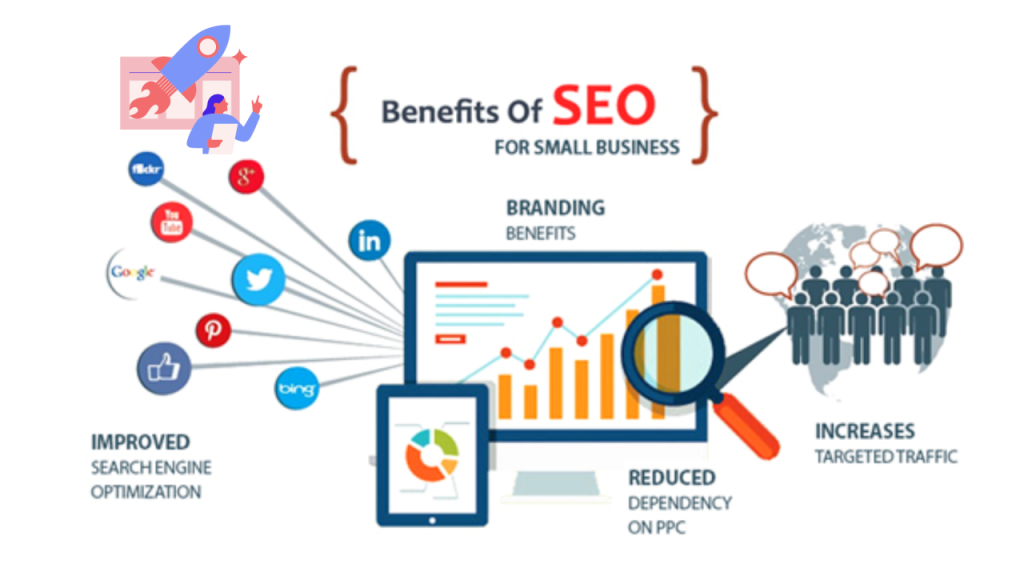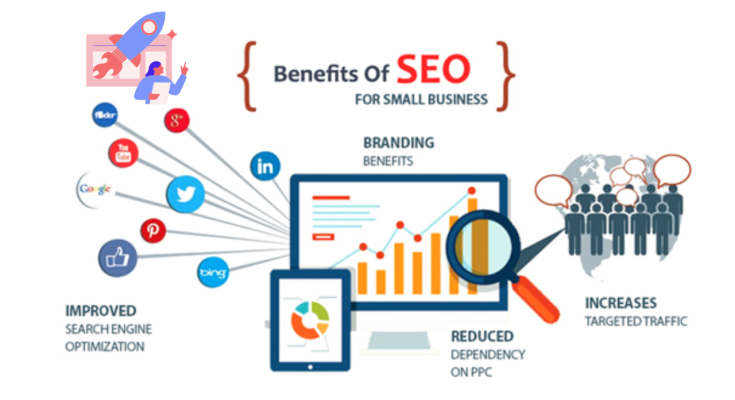
The Role of SEO in Boosting E-commerce Sales, in the highly competitive world of e-commerce, standing out from the crowd can be challenging. With millions of online stores vying for customer attention, how can your business gain visibility and attract more shoppers? The answer lies in Search Engine Optimization (SEO). SEO is a powerful tool that helps improve your website’s visibility on search engine results pages (SERPs), driving organic traffic and boosting sales. In this article, we’ll explore the crucial role of SEO in enhancing e-commerce sales and provide actionable tips to optimize your online store.
1. Understanding SEO in E-commerce
SEO is the process of optimizing your website to rank higher in search engine results. For e-commerce businesses, SEO involves optimizing product pages, category pages, and the overall site structure to make it easier for search engines like Google to understand and index your content. The higher your website ranks for relevant search queries, the more likely potential customers are to find and visit your site, leading to increased sales.
2. Keyword Research: The Foundation of E-commerce SEO
Effective SEO starts with thorough keyword research. This involves identifying the search terms your target audience uses when looking for products similar to yours. Tools like Google Keyword Planner, Ahrefs, and SEMrush can help you find relevant keywords with good search volume and manageable competition. Focus on long-tail keywords (phrases with three or more words) that are specific to your products, as these often have higher conversion rates due to their specificity.
3. On-Page SEO: Optimizing Product and Category Pages
On-page SEO refers to optimizing individual pages on your website. For e-commerce sites, this means:
- Product Titles and Descriptions: Use clear, descriptive titles and detailed product descriptions that include relevant keywords. This helps search engines understand what your products are and improves your chances of ranking for those terms.
- URL Structure: Use clean, descriptive URLs that include keywords and are easy for users to read. For example,
www.yourstore.com/blue-wool-sweateris better thanwww.yourstore.com/product12345. - Meta Titles and Descriptions: These appear in SERPs and are crucial for attracting clicks. Write compelling meta titles and descriptions that accurately describe the product and include your primary keywords.
- Image Optimization: Use high-quality images with descriptive file names and alt text. This not only helps with SEO but also improves accessibility for visually impaired users.
4. Technical SEO: Building a Strong Foundation
Technical SEO ensures that your website is easy to crawl and index by search engines. Key aspects include:
- Site Speed: A fast-loading website is crucial for both user experience and SEO. Use tools like Google PageSpeed Insights to identify and fix issues that may be slowing down your site.
- Mobile-Friendliness: With a growing number of shoppers using mobile devices, having a mobile-friendly website is essential. Ensure your site is responsive and provides a seamless experience across all devices.
- Secure Sockets Layer (SSL): Having an SSL certificate (indicated by “https” in your URL) is vital for security and is a ranking factor for Google. It also builds trust with your customers.
5. Content Marketing: Enhancing Visibility and Engagement
Content marketing is a valuable component of SEO that can help attract and engage customers. Consider starting a blog on your e-commerce site where you can post articles related to your products, industry news, or helpful guides. This not only drives traffic but also establishes your brand as an authority in your niche. Additionally, high-quality content can earn backlinks from other websites, further boosting your SEO efforts.
6. Building Backlinks: Boosting Authority and Ranking
Backlinks are links from other websites to yours and are a critical factor in SEO. They signal to search engines that your site is trustworthy and authoritative. To build backlinks, consider strategies such as:
- Guest Blogging: Write guest posts for reputable sites in your industry, including a link back to your e-commerce site.
- Influencer Partnerships: Collaborate with influencers who can link to your site from their blogs or social media profiles.
- Content Promotion: Share your blog posts and other content on social media and relevant forums to increase visibility and the chances of earning backlinks.
7. Monitoring and Analytics: Measuring Success and Making Improvements
SEO is an ongoing process that requires regular monitoring and adjustments. Use tools like Google Analytics and Google Search Console to track your site’s performance, including traffic, bounce rates, and conversions. These insights can help you identify areas for improvement and measure the success of your SEO efforts.
Conclusion
SEO is a vital component of any successful e-commerce strategy. By optimizing your website for search engines, you can increase your visibility, attract more organic traffic, and ultimately boost your sales. From keyword research and on-page optimization to technical SEO and content marketing, each aspect plays a crucial role in enhancing your online presence. Remember, SEO is a long-term investment, but with consistent effort, it can yield significant results for your e-commerce business. Start implementing these strategies today and watch your online store grow!
